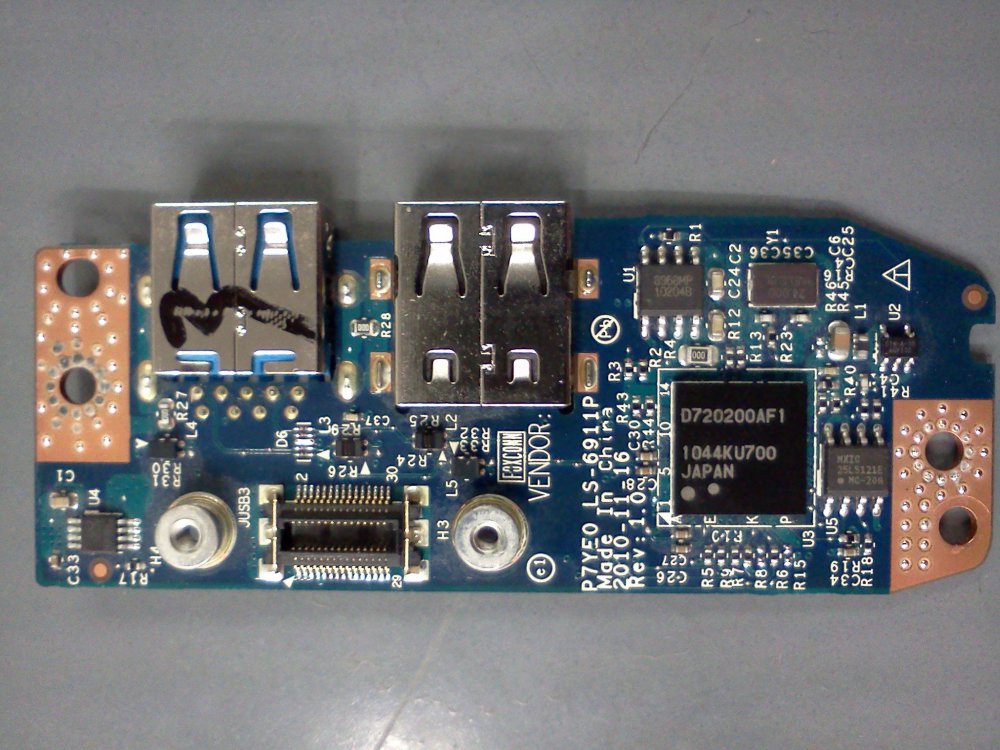

- #NEC RENESAS USB 3.0 DRIVER 2040 SERIES#
- #NEC RENESAS USB 3.0 DRIVER 2040 MAC#
- #NEC RENESAS USB 3.0 DRIVER 2040 WINDOWS#
Glad to see all of you kickin' and alive! Congrat's on > 100 pages progress 8) What if Steve Jobs doesn't come back? What do you think will be the future of Apple? Will it just die? Or only get back to a small niche?! Thinking of it, it's more an Apple thing really. Funny how they took something existing and made it (possibly) future proof. LP really should be something, if it strives. I would have paid for a working product, not a half baked thing. What about if you want to add an extra drive (if your laptop supports it)? Nah, not for me. And that's considering the OEM used in fact ports 0 and 1, and not others. Regarding the SATA issue, I know ports 0 and 1 (6Gpbs) are not affected (so far that we know of) but still, would you have it on your machine, even knowing you'd probably never need the extra (not working properly) ports? I wouldn't for sure.
#NEC RENESAS USB 3.0 DRIVER 2040 SERIES#
Still, 6 series was supposed to be also fully tested and guess what?! Once HDBT penetrates the market, only USB will stand a chance at remaining relevant.Djs, 'm sure Intel tested it out with Apple all the way. However, the same cannot be said for FireWire/eSATA/Thunderbolt/HDMI/DVI etc, which have all been made obsolete by the existence of HDBaseT. USB is so ubiquitous that it can't be overtaken. USB is well underway to being one of two "be-all-end-all" connectors for consumer tech of the future.
#NEC RENESAS USB 3.0 DRIVER 2040 WINDOWS#
However, Asus is alone in supporting UAS in Windows 7, and it does so through by licensing MCCI's ExpressDisk UASP Driver.īTW, very interesting article. Syba SD-PEX20 112: Based on Asmedia ASM1042 USB 3.0 Host Controller ICSyba SD-PEX20 122: Based on VLI VL80x USB 3.0 Host Controller IC(This model includes a 20-pin header for up to 2(two) additional external USB 3.0 connectors on newer cases which can be used simultaneously with the rear connectors, so this is technically a 4-port card and is the better deal IMO, but I digress.) This is the correct link: Syba SD-PEX20112 The model the link sends you to is SD-PEX20 122, which has the VLI VL80x chipset. The model referenced was SD-PEX20 112, which does include the ASM1042 controller.

Is this referring to something else, or has Syba switched to a different controller since the time this article was written?ĮDIT: Nevermind, the article linked to the wrong card but referenced the correct model number. This article says that the Syba SD-PEX20122 card has ASM1042 controller hardware, yet Syba's site and everywhere else says that this card is based on "VLI VL80x USB 3.0 Host Controller IC". I imagine USB might just become a smaller part unless the reengineer the protocols and encoding but that might also kill any backwards compatibility it has currently. So while USB 3.0 is great for where I work and such, as a lot of customers may not be able to afford eSATA or TB devices or have those on their PC, its not going to be able to keep up with demands of people who use multiple large eHDDs for data storage and thats where eSATA 6Gbps and TB will come into play. I imagine if the drive had a better controller (say current Sandforce) it could reach 500MB/s (SATA 6Gbps speeds easily since the interface was designed with this in mind. As well, it reaches almost 300MB/s read and write which is just as fast as a SATA 3Gbps SSD goes. A 4GB file will have a better average transfer rate than a 4MB file on USB, eSATA or TB.
#NEC RENESAS USB 3.0 DRIVER 2040 MAC#
While its a Mac based drive you can clearly see that as the size goes up (4KB->1024KB), the speed goes up which makes sense. And while its nice to have a faster USB standard like USB 3.0, the main idea behind USB, a single connector for peripherals like mice, KB and printer, was designed when eHDDs were almost non existent.įirewire was designed more with eHDDs and the such in mind and had better encoding and protocols in place to support eHDDs and such.Įven better is Thunderbolt which has shown the ability to reach top end speeds of the attached device: One thing with USB is that it was never designed for massive large data thoroghputs like eHDDs and larger flash drives.


 0 kommentar(er)
0 kommentar(er)
